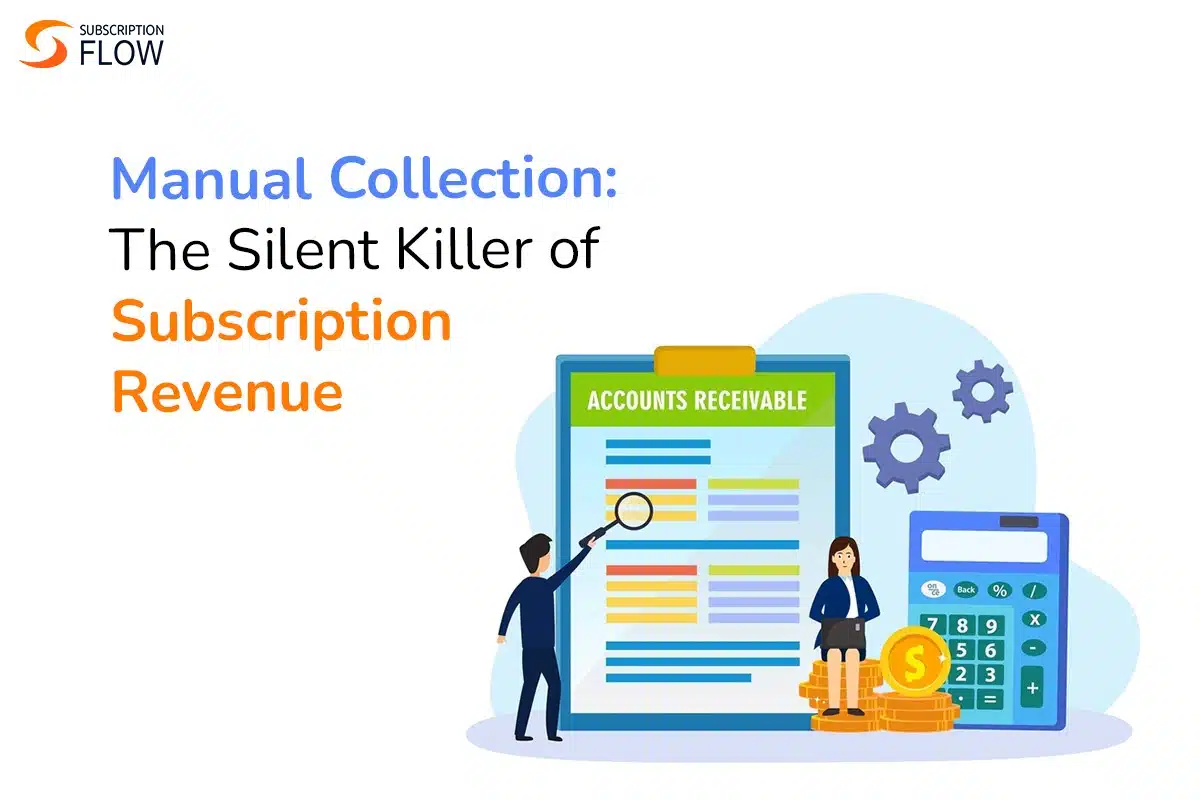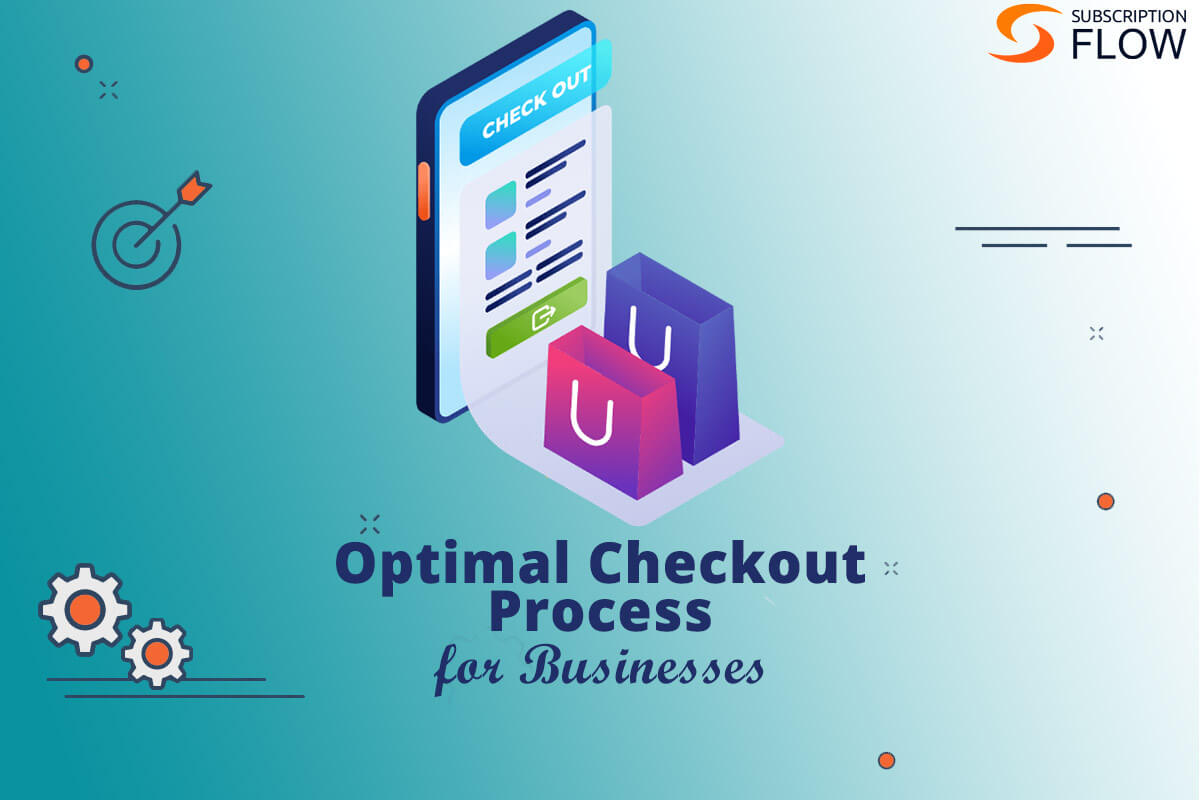
Manual Collection: The Silent Killer of Subscription Revenue
In the highly competitive world of subscription-based businesses, the ability to collect outstanding payments efficiently is critical to ensure a steady stream of revenue and fuel long-term growth.
Compromising this crucial aspect of accounts receivable (AR) operations by using outdated and inefficient manual collection strategies, not only negatively impacts your cash flow but can also damage customer relationships and compromise future business opportunities.
Despite the myriad of risks and limitations associated with manual collection, many companies still rely on outdated processes of collecting payments, which proves to be a major bottleneck for business growth.
In this blog, we will explore the risks associated with manually collecting your payments and the ways in which it hinders subscription revenue growth.
We will also discuss the ways in which AR automation can facilitate the collections process and help businesses scale.
What is Manual Collection?
Payment collection comes under the umbrella of accounts receivable (AR) operations.
These involve sending individual invoices to customers, tracking their payments, managing outstanding balances, and reconciling accounts. When executed manually it exclusively utilizes human resources to carry out all these tasks.
Manual collection of payments refers to the manual management of incoming payments in the form of cheques, cash, or other means. It also involves utilizing human resources to take actions to recover failed payments, follow up on outstanding charges and effectively plug revenue leaks to grow the bottom line.
Collecting payments manually proves to be challenging, complex, time-consuming, and highly error-prone resulting in revenue leaks that hamper business growth.
How Does Manually Collecting Payments Damage Subscription Revenue?
While manually collecting and reconciling payments may seem straightforward enough, in theory, it can quickly become complex, time-consuming, and highly error-prone.
This is especially true for growth-oriented businesses that must cater to an increasingly large pool of customers and progressively heavier transactional volumes.
Manual payment collection processes also require a significant amount of administrative work, which can lead to errors and inconsistencies in the payment process.
In addition, these outdated processes are difficult to scale, as businesses need to add more staff to manage increasing payment volumes.
Let’s explore all the ways in which manual payment collection damages subscription revenue.
1. Involuntary Churn Caused by Failed Payments
Payments fail. It’s bound to happen.
But failed payments do not necessarily mean your customer wishes to churn.
There can be countless reasons behind payment failure including expired credit card details, insufficient availability of funds, and payment processor errors, etc. that lead to involuntary churn, negatively impacting your growth potential.
Read More: The Ultimate Guide to Handling SaaS Failed Payments
Manually collecting payments makes it very tedious to recover failed payments.
Let’s paint a picture.
- An expired credit card results in a failed payment.
- This requires your accounts officer to fish out the customer’s contact details which might also be expired, adding further complexity to the recovery process.
- They must then contact each such customer individually and manually update their payment method.
- The accounts officer might not be able to get in touch with the customer leading to failed recovery.
- In the event that the employee persists and successfully contacts the customer after multiple attempts, they might irritate the customer in the process of payment recovery, leading to a decrease in their lifetime value.
This whole process wastes precious time and has a low success rate compared to AR automation which could prevent this issue from even arising in the first place.
It could do so by automatically updating payment details through an account updater service or through automated pre-dunning emails.
Read More: How Account Updater Is Helping SaaS Businesses Worldwide
In the above-mentioned scenario and countless others, manually recovering failed payments is a losing game that damages your reputation, negatively impacts your bottom line, and stunts growth potential.
2. Damaged Customer Relationships Leading to Churn
Manually recovering failed payments also damages the customer subscription journey as it involves persistent follow-ups through emails and calls.
No matter how carefully you curate your manual follow-up workflow, it is bound to create friction in your relationship with customers.
Customers may become frustrated with inconsistent payment processes and poor customer service, leading them to cancel their subscriptions.
Phil Chesham at Time Finance, shares survey results that:
“Many businesses chasing payments negatively impact their relationships with their own customers and… one-third struggle to pay…invoices on time.”
This illustrates the vicious cycle late payments create and how negatively they impact your customers’ lifetime value.
3. Damaged Vendor Relationships
In the same breath, accounts payable (AP) errors and inefficiencies also have a negative impact on any vendors your business may be utilizing, who may choose to stop doing business with you due to late payments or processing errors. This can have grave repercussions for your business in the long run.
4. Difficulties in Securing Funding
Any start-up or SME will also rely on funding secured through accelerators or venture capitalists. Revenue growth and increased customer counts are the most vital KPIs in this regard.
The impact of a manual payment collection strategy on subscription revenue is significant. Delayed or missed payments disrupt cash flow and create financial instability for the business.
In addition, manual payment collection processes can cause a delay in recognizing revenue, which can lead to inaccurate financial reporting.
With all the inefficiency in manual payment collection, your business is sure to face difficulties in nailing these metrics, scaling up, and securing the numbers you need to secure funding.
5. Hampered Scalability
Spreadsheets don’t scale – collecting payments manually only works on a very small scale of operation.
Additionally, with human resources tied up in payment collection tasks, reduced cash flow, and heavy administrative costs resulting from late payments, scalability is hampered.
Undoubtedly, your business needs to be able to automate repetitive daily tasks in the payments space in order to strategize and implement growth-oriented tasks.
Ultimately, manual payment collection could hammer the proverbial final nail in your business’s growth and scalability potential by eating away at your subscription revenue.
The solution? Payment Automation.
The Benefits of Payment Automation
Automated payment collection can help businesses overcome the limitations of manual payment collection and boost subscription revenue growth.
Subscription management software integrated with a robust payment gateway can automate payment processing, invoice generation, and payment reminders, reducing the amount of manual work required to manage incoming payments.
The benefits of automated payment collection include:
- Streamlined AR workflows
- Error-free and on-time billing automation
- Flexible pricing plans can be billed without complex calculations
- Automated proration
- Automated and tailored invoice generation
- Automated payment reconciliation that is flagged for review only when inconsistencies arise
- Programmable recurring payment flows that increase approval rates
- Customer self-service portals to maximize customer satisfaction
- Pre-dunning emails and account updater services to prevent failed payments
- Smart dunning to maximize failed payment recovery rate
- Access to real-time AR data for business insights
And much more!
Choosing the Right Automation Solution
When selecting the right subscription management software for your business, you should consider several factors including:
- Extensive payment gateway integrations
- System flexibility
- User-friendly
- Scalability
- Comprehensive reporting and analytics
If you’re looking to automate your payment processes, contact our sales team to learn more!
Conclusion
Collecting payments manually is a silent killer of subscription revenue, hindering business growth and creating financial instability.
The right subscription management software solution can enable businesses to achieve consistent and sustainable revenue growth through payment automation.










